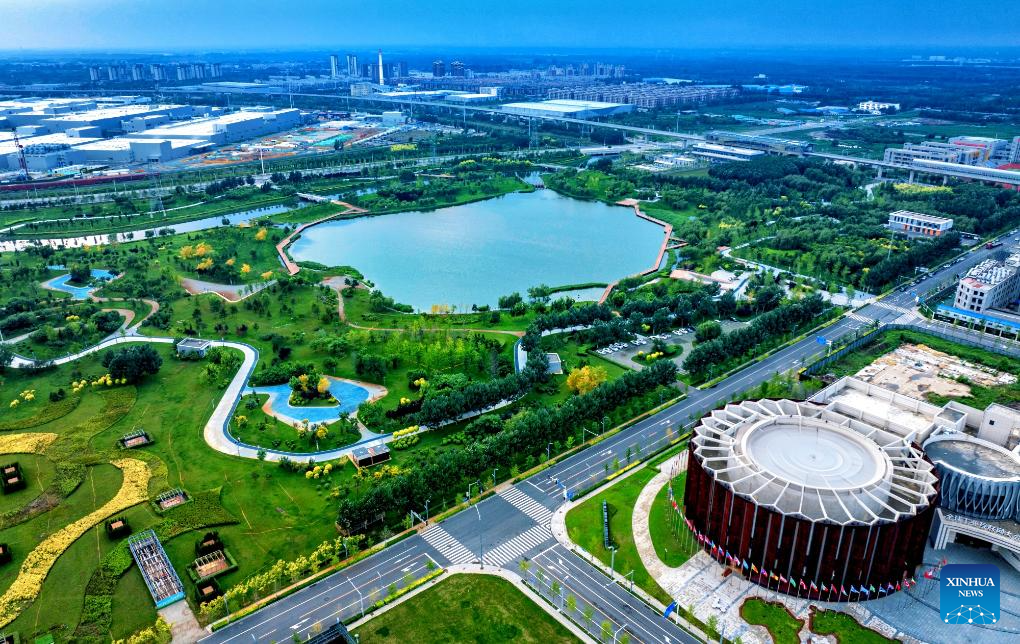From Mahnoor Makhdoom
Rizhao: Rizhao, China -Nestled along the southeastern coast of Shandong province, Rizhao is one of those rare places in China that seems to have mastered the art of balance – between modern comfort and natural calm, between deep history and an unhurried rhythm of life. I visited the city on a quiet weekend, and what I found was a corner of coastal China that feels wonderfully detached from the rush of its larger neighbours – a place where time slows down just enough for you to breathe, reflect, and rediscover simple beauty.
Rizhao’s beaches are its first and most obvious invitation. The sand is pale and fine, and the water – remarkably clear for a Chinese city beach – glimmers under sunlight so gentle it almost feels painted. Unlike the packed resort towns elsewhere along China’s coast, Rizhao’s seafront feels unforced. Early in the morning, locals practice tai chi on the promenade; children chase waves that roll in softly from the Yellow Sea; and fishermen quietly mend their nets beside small, colourful boats.
The city takes its name from the phrase “the city bathed in sunshine,” and it truly lives up to it. The light here has a clarity that makes everything look more vivid – the blue of the water, the green of the parks, the golden tones of the sand dunes further south. A short stroll along Wanpingkou Beach Park reveals clean, tree-lined paths and outdoor cafés where the soundtrack is not traffic, but the sound of wind and water.
Rizhao’s tranquillity isn’t only found by the sea. Travel slightly inland, and you’ll encounter one of the city’s most remarkable treasures: a 4,000-year-old cypress tree, standing sentinel in a quiet temple courtyard. Its gnarled roots twist through the earth like veins of history, and the air around it carries the scent of time itself. Locals regard it with quiet pride – a living witness to millennia of human life, wars, dynasties, and rebirth.
Nearby museums and archaeological sites preserve Neolithic artefacts from the Dawenkou and Longshan cultures, offering a glimpse into the early human communities that once thrived along this coast. Ancient pottery, tools, and jade ornaments tell stories of artistry and trade that long predate the modern city. Rizhao’s past feels remarkably tangible – not buried or forgotten, but seamlessly woven into its identity.
Despite its ancient roots, Rizhao feels refreshingly young in spirit. Its urban design emphasizes space and greenery, with broad boulevards, bike lanes, and seaside parks that invite wandering. The air is clean, the pace unhurried, and the people – as every visitor soon discovers – are warm in the kind of quiet, genuine way that makes you feel at home without needing translation.
For those who enjoy cycling, the coastal greenway is one of the most scenic in eastern China, stretching for dozens of kilometres with constant views of the sea. Small seafood restaurants line the route, serving freshly caught shrimp, squid, and shellfish – simple, unpretentious meals that taste of the ocean and sunshine.
What sets Rizhao apart from other seaside destinations in China is its sense of purity and balance. It doesn’t try too hard to impress; it simply is ; a city that invites you to slow down, to appreciate how light falls on the water, how ancient roots hold firm in modern soil, how history and everyday life quietly coexist.
Whether you’re exploring its museums, sitting beneath the shade of that ancient tree, or watching the sun dissolve into the sea at dusk, Rizhao offers something few places manage to sustain: a feeling of continuity – that the world may change, but calm, beauty, and history can still coexist in harmony.
For travellers looking beyond China’s well-worn tourist routes, Rizhao is a rare find: a city where the past whispers, the sea sparkles, and time stands still just long enough for you to truly listen.




